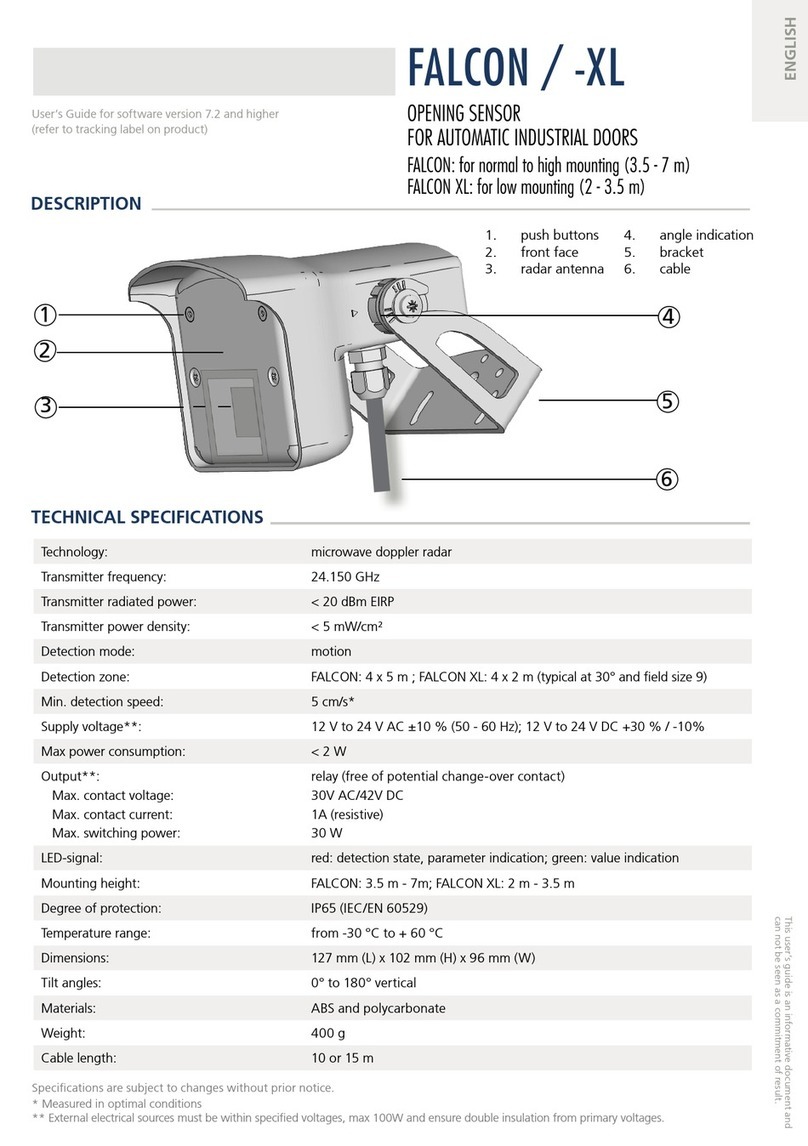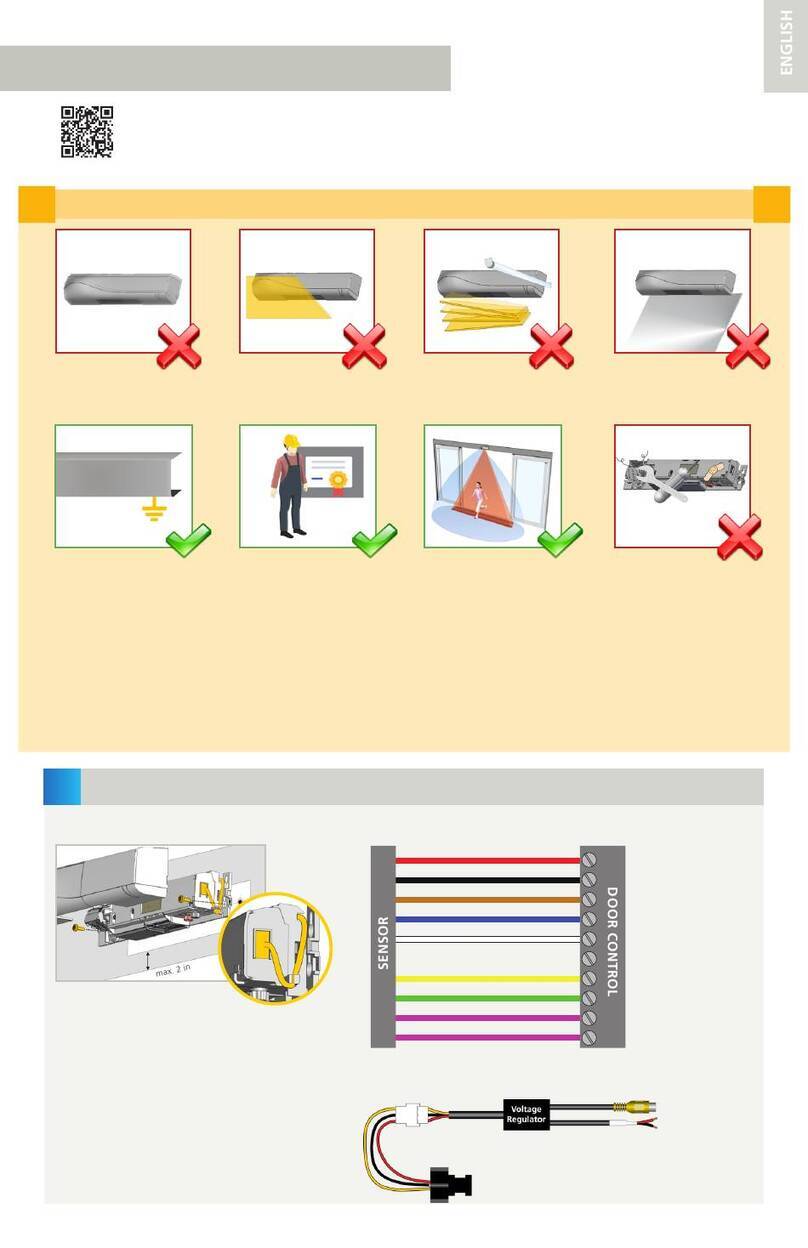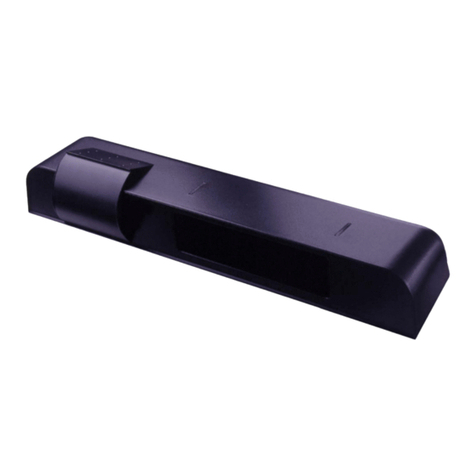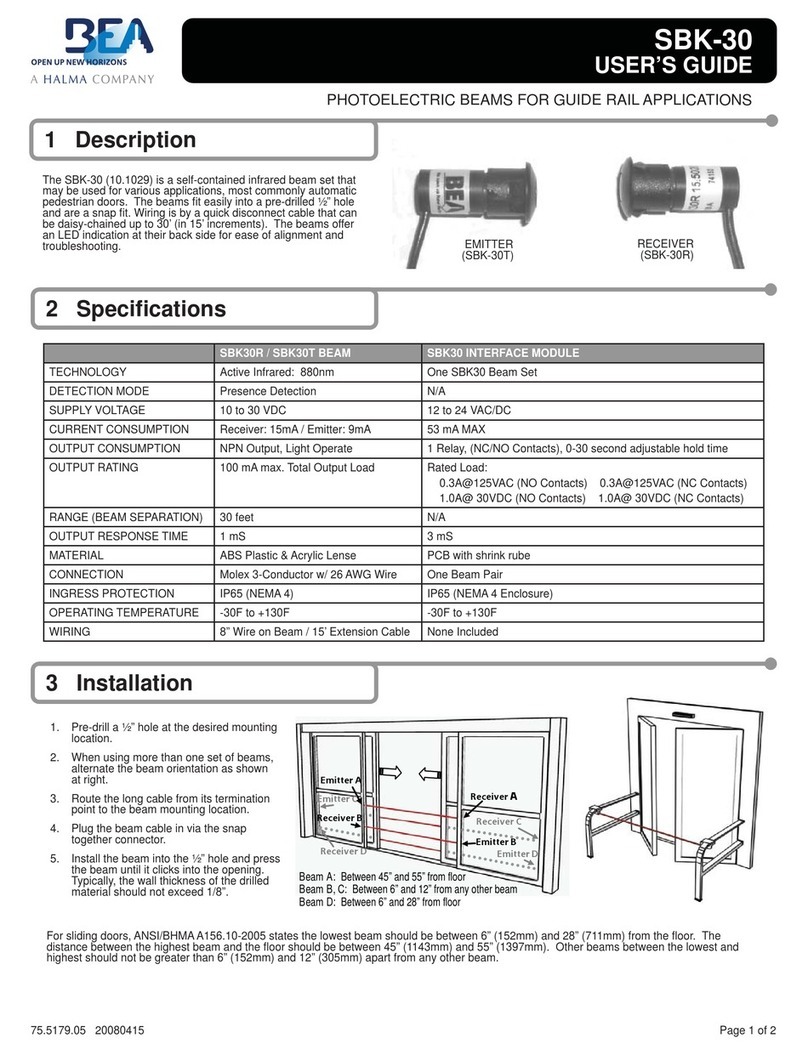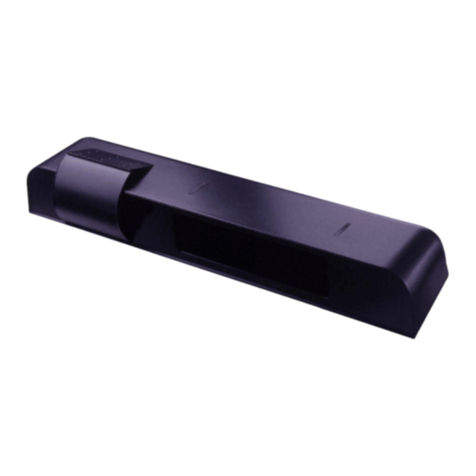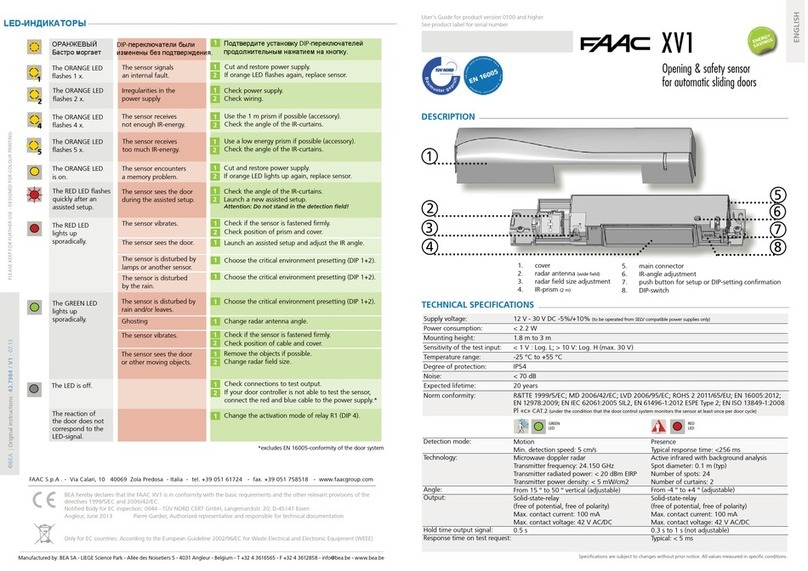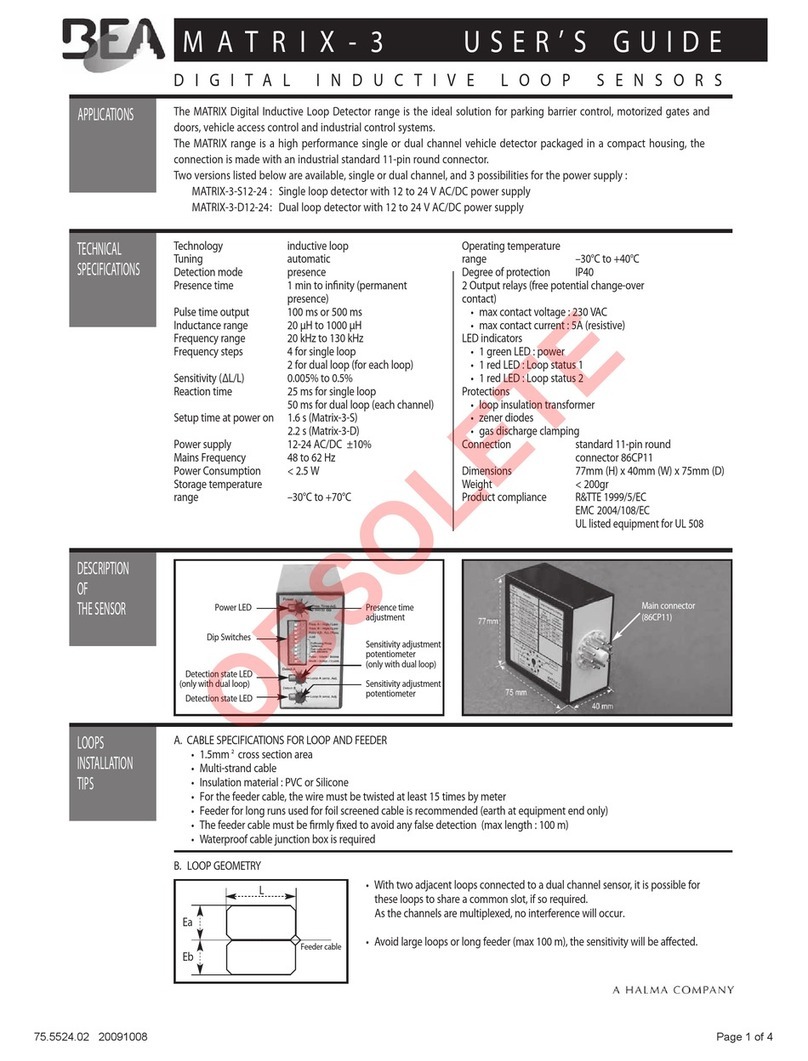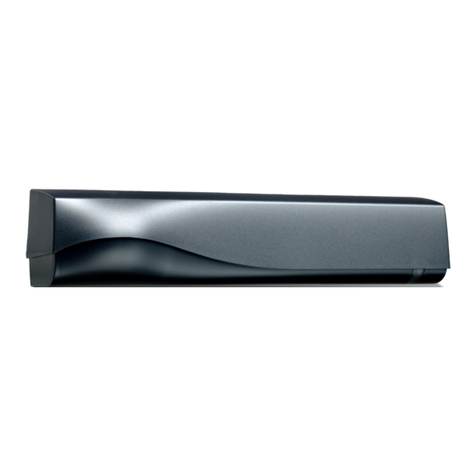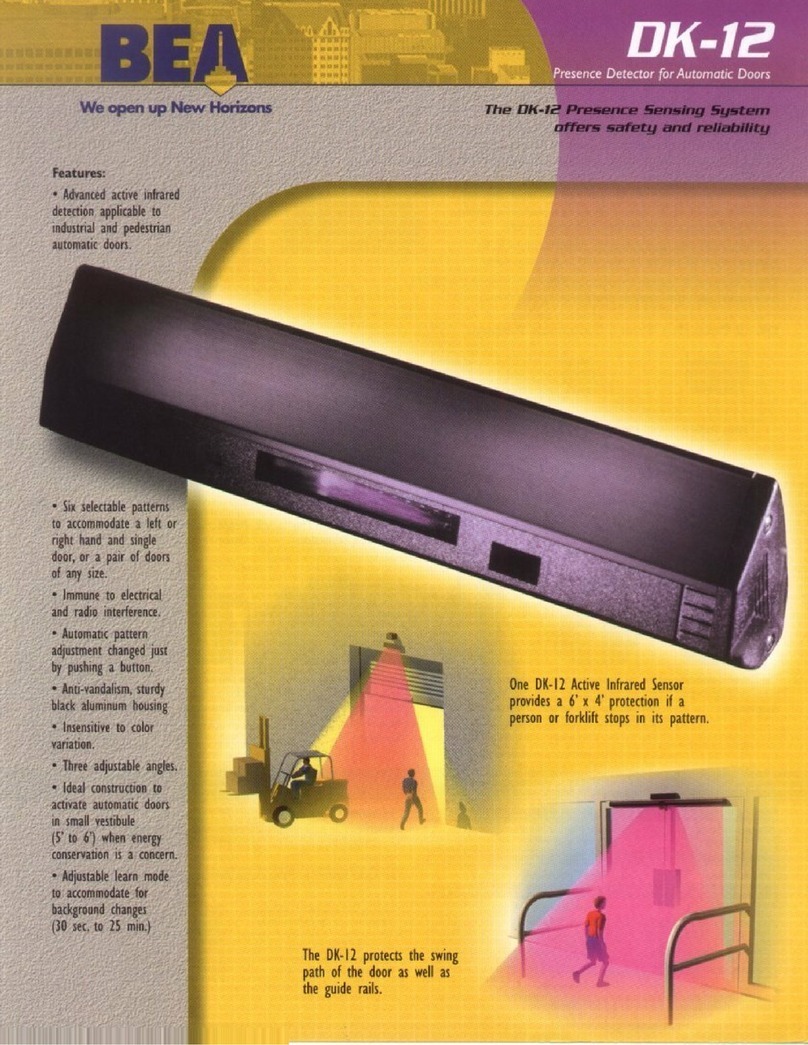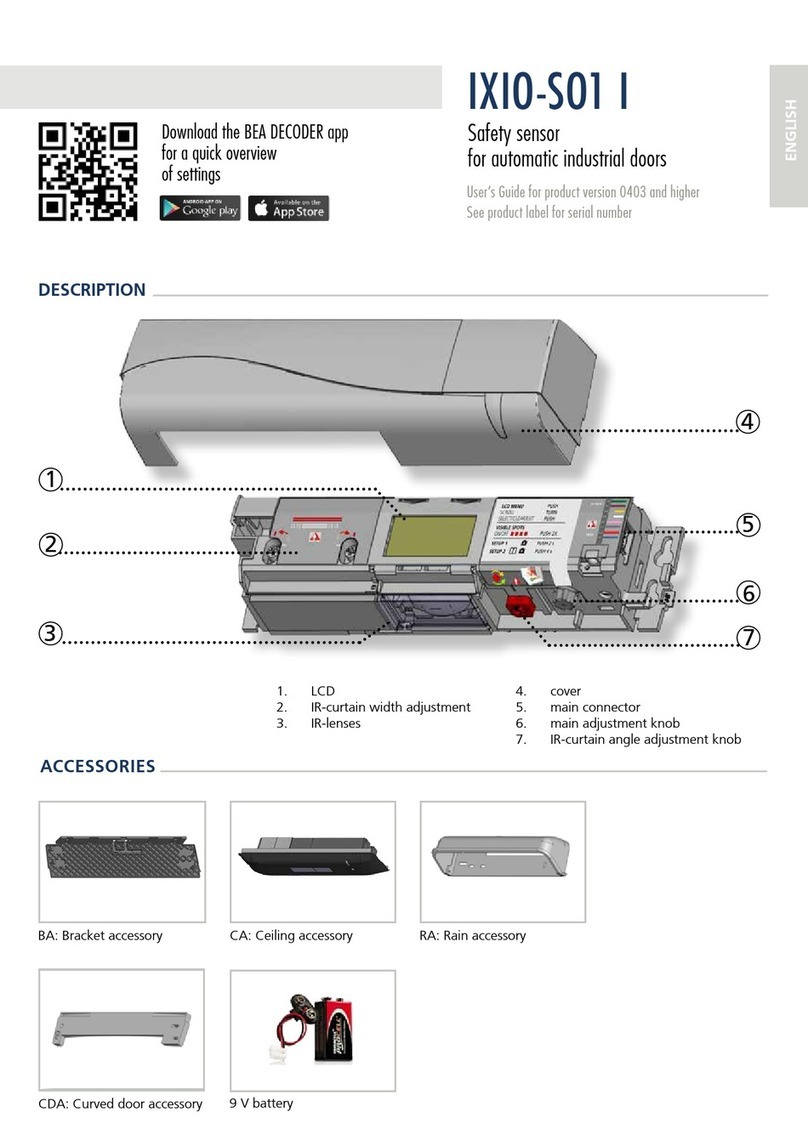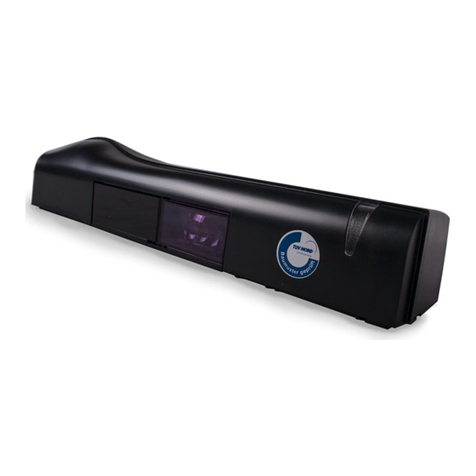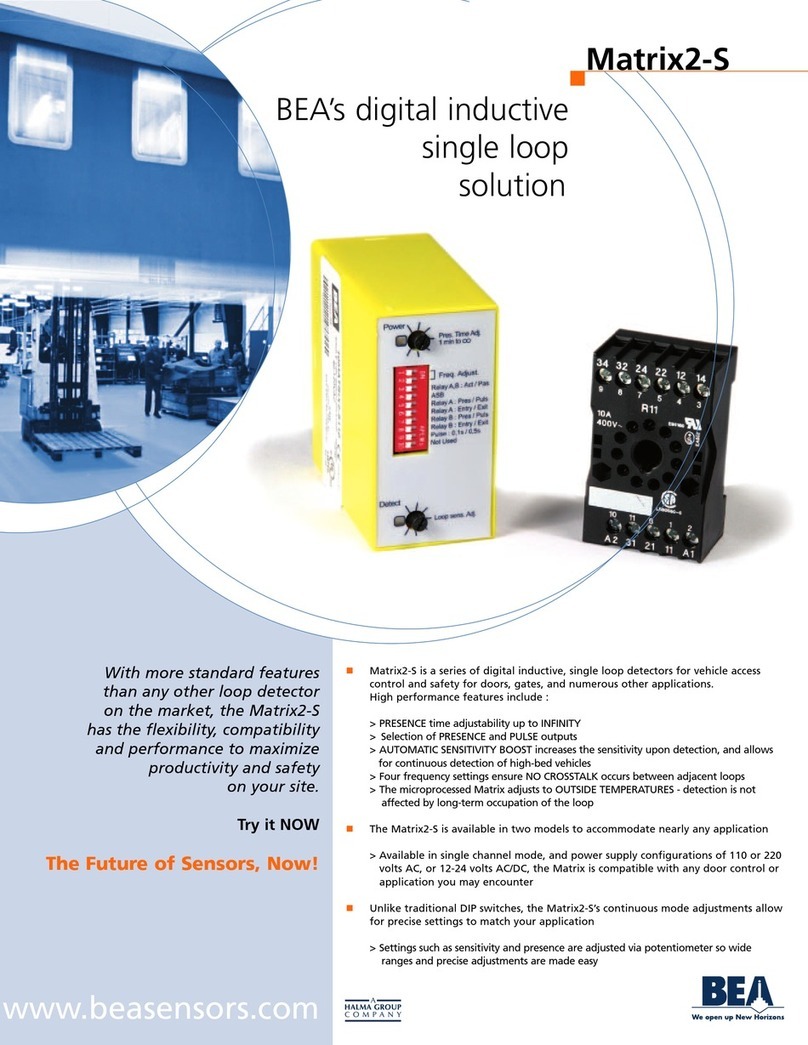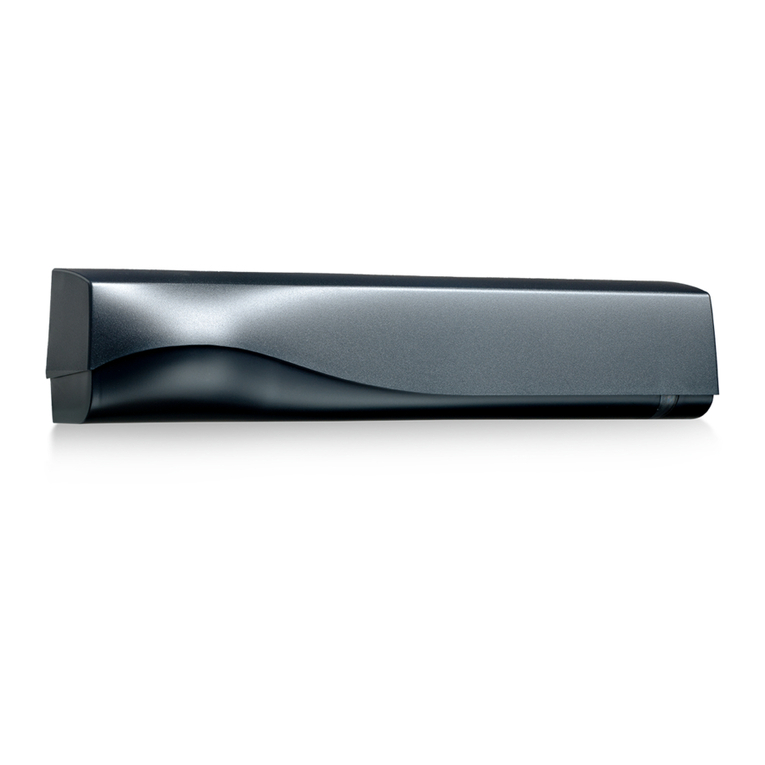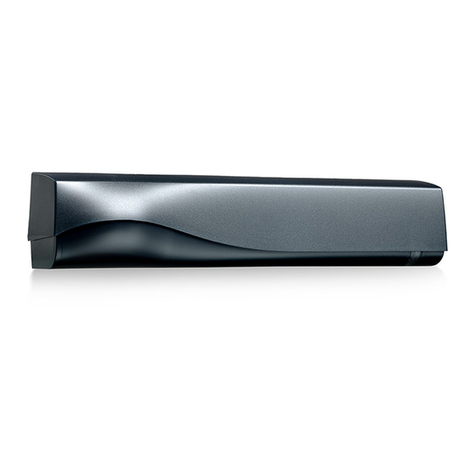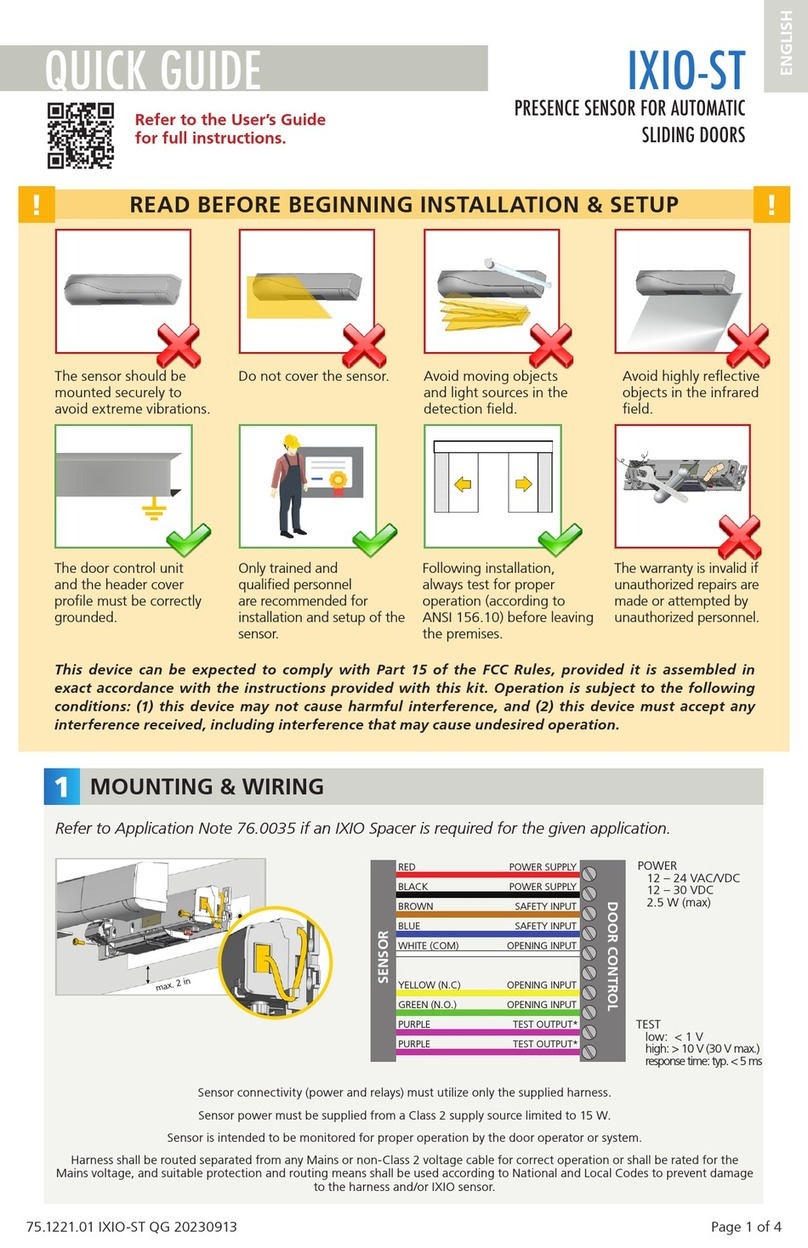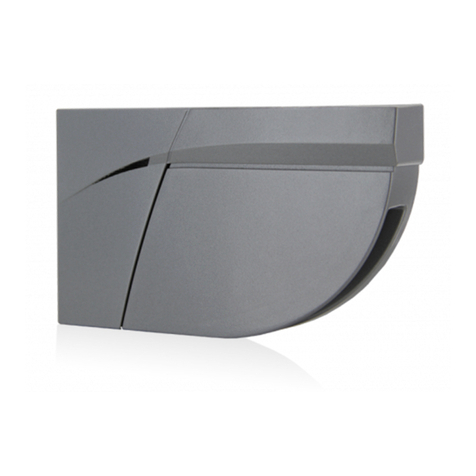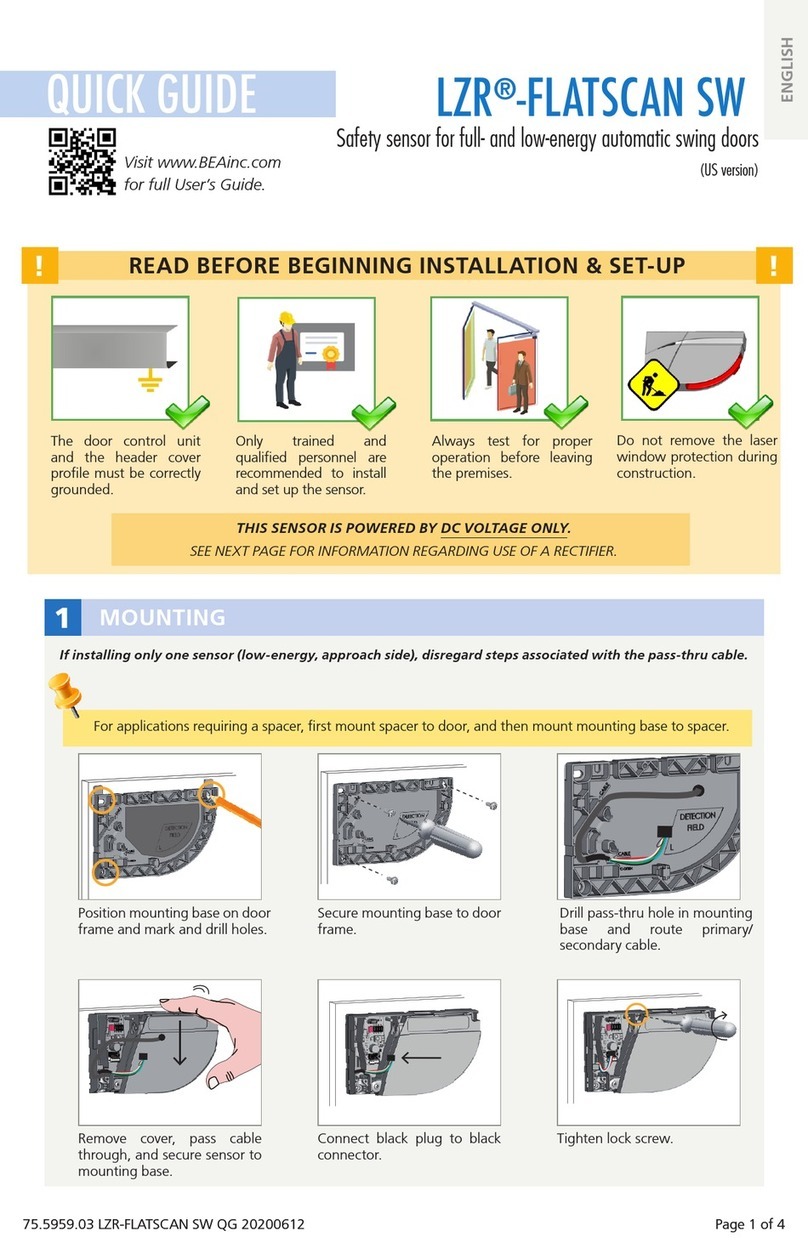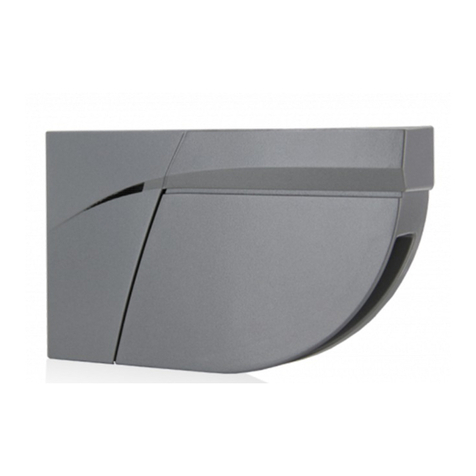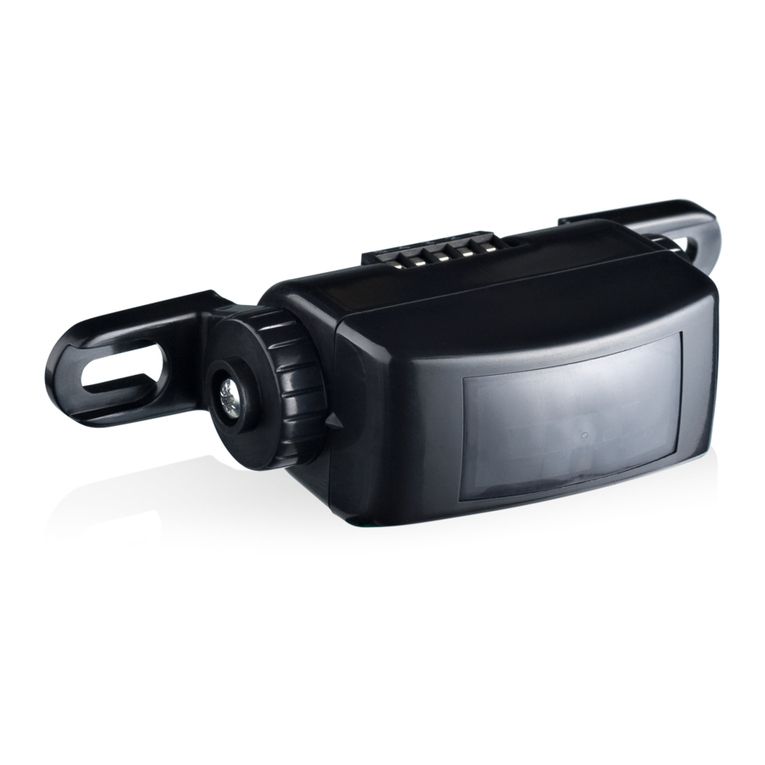
Page 3 of 6
75.0069 Mar2002 V4 [Rev 8/28/2002]
ELECTRICAL
INSTALLATION –
Cont.
PATTERN
WIDTH
SIDELITE SAFETY without safety on control.
When using the Crystal for sidelite protection, the crystal’s output can NOT control the speed of the door. If the door
control is equipped with a safety circuit, the Crystal can be connected to the safety and a creep mode may be
achieved if this option is available on the door control.
IF the door control does not have a safety circuit, the crystal still may be used for sidelite protection. However, a
creep mode cannot be achieved. The crystal can keep the door closed or open once detection by the crystal has
occurred. See the diagrams below for details on wiring a Crystal to a door without safety.
1. If the Crystal is used for sidelite safety on a sliding door, it must be wired (NC & COM) in series with the motion
detector. Also, a normally open (NO) door position switch must be wired in parallel with the Crystal in order to allow
activation by the motion sensor when the door is other than fully closed and the Crystal is in detection. If the Crystal is
in detection while the door is fully closed, the door will not open. When the door is open, only the motion sensor,
when in detection, may keep the door open. See schematic below.
Door Control
Activation Device
Activate
(NO)
COM
COM NC
Crystal
COM
NO
COM NO
Door Position Switch
Before powering the sensor up, select an appropriate lens, narrow or wide, for the application. By changing the front
lens, the pattern width can be made narrow (3’) or wide (6’). In order to get the narrow pattern; the scored lens must
be placed below the emitter and receiver in the housing. If the wider pattern is desired, the semi-scored lens must be
placed below the emitter and receiver in the housing. The lens that is not used, is simply stored in the remaining slot.
See the photos below for more detail.
Scored Lens Semi-scored Lens
Narrow Pattern (3 foot width) Wide Pattern (6 foot width)
3’
6’
Lens Storage Emitter & Receiver






